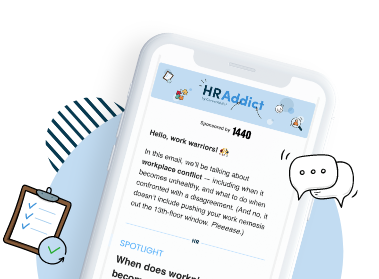This guest post is written by Rebecca Barnatt-Smith from Solvid UK.
The rise of remote work, combined with the access HR teams now have to global talent, has transformed how companies approach recruitment.
With at least 90% of employers in the US and Europe intending to expand their global workforce in the next five years, hiring across borders is becoming the new normal, and more diverse workplaces are becoming the standard.
But although hiring across borders may seem like a no-brainer, it poses additional challenges— from cultural differences to legal compliance considerations. So, this article will pose the question, ‘how can HR teams confidently and compliantly hire across borders?’
TABLE OF CONTENTS
Why global talent acquisition is on the rise
Advancing technology has changed the way businesses recruit. With digital hiring practices making it possible for HR teams to broaden their reach just from a computer, global talent acquisition continues to grow in popularity.
One of the most notable shifts was following the COVID-19 pandemic. As many businesses had to find ways to adopt a remote working setup, it changed the corporate landscape for good. Since then, both businesses and employees have realized the benefits that come with remote and hybrid infrastructures. This shift means new hiring possibilities for HR teams too, as they can now hire without geographical restrictions.
Another key reason behind the spike in global talent acquisition is the shortage of local talent for specialized roles. Talent shortages remain as one of main challenges in hiring, with fields such as tech, design, and data analysis facing an ongoing struggle to fill roles with the level of expertise needed. With so much demand, not only does it mean filling the positions gets tricky, but it also means higher costs and longer times needed. This has led to businesses looking overseas to find the specific skillset for the roles that need to be filled.
Aside from widening their talent pool, global hiring also allows HR teams to build a more diverse and resilient workforce. Bringing in employees from different cultural backgrounds and educational systems means their team can offer a variety of approaches to tasks and differing outlooks on what the market wants. This offers a competitive advantage over businesses that lack diversity.
Finally, another key reason why businesses prefer to hire talent globally is the lower cost. The average monthly salary in the USA is $5,551, but with global hiring, businesses can access countries with lower average salaries and overall costs, especially since there’s no need for a physical office setup.
Being able to hire from other countries with lower average wages means they can cut down on overhead costs as long as they align wages with the expectations of potential candidates. Creating a distributed team also means operational hours can be covered longer if necessary, since global employees can cover different time zones.
Legal and compliance considerations
The benefits of hiring across borders are undeniable, but it entails additional legal responsibilities. HR teams must be aware of how employment laws can get more complicated when working with employees from other countries and ensure they remain compliant in order to avoid legal trouble.
Employment classifications
The classification of workers varies from country to country, and it’s important for a business to know the difference between an employee and a contractor.
An employee brings extra responsibility to the employer as they’re required to manage the taxes, paid leave, and other benefits. The HR department must have a thorough understanding of the labor laws in their employees’ country and ensure they’re aligned with any applicable workplace regulations.
On the other hand, a contractor is in charge of their own work. They would typically manage their own working schedule, billing, and taxes.
To avoid misclassification risks, HR must ensure the nature of the contract aligns with the legal requirements for either employee or contractor. Certain regions have stricter regulations regarding who can be considered a contractor, meaning they need to meet a particular set of requirements in order to not be considered an employee. Factors such as working hours and who owns the equipment being used can also impact the classification, so thorough research must be carried out from the get-go.
Country-specific laws
Every country has its own employment laws, and if a business is to hire across borders, it’s their responsibility to understand, implement, and comply with all legal requirements.
One of the key considerations is local tax laws. Every country has its own labor laws, and if taxes are not paid correctly, it can result in fines and impact the employee’s residency or visa status.
Aside from taxes, the country's regulations around working hours, holiday allowance, pension contributions, healthcare insurance, and other employee benefits must be met. Since these are bound to differ among employees from different parts of the globe, HR must find a way to meet country-specific laws without upsetting the balance of the team.
Permanent establishment risk
A permanent establishment (PE) pertains to the fixed location in which a business operates. This is a necessity for tax purposes, even if the business works remotely and does not require employees to physically use the location.
From a business perspective, there’s a risk that comes with not complying with legalities if PEs are not set up correctly. If an employee is hired from another country and is not set up as a local entity, it can cause issues in their tax records since the business is effectively being carried out in said country, but without the needed paperwork.
Since there could be gray areas when it comes to labor laws that apply to remote employees, or whether they’re classified as an employee or a contractor, it’s recommended for HR teams to align with tax professionals when expanding into new markets.
How to stay compliant
Global hiring requires a higher level of input from HR teams since they need an understanding of employment laws in each country where they’re hiring.
Many businesses opt to use an Employer of Record (EOR), a third-party entity that manages global hires from a legal perspective. Remote, Deel, and Oyster are popular EOR services as they can handle everything from payroll to taxes, acting on behalf of the business.
If an organization is working with employees from regions that pose higher legal risks due to complex regulations, working with the local legal counsel is recommended. This way, businesses can get reliable advice from actual experts who know the legal landscape like the back of their hand.
Cultural and geographical considerations
Hiring across borders often requires more work than it may seem at first. Since job posts will reach potential candidates from across the globe, cultural diversity should be considered, and HR needs to ensure that the process is inclusive.
-
Inclusive job descriptions
When writing job descriptions, the language used needs to be clear. Any local idioms or unclear cultural references should be avoided as these may not translate well and can make key information difficult to interpret.
-
Timezone-aware scheduling
When it comes to the interview stage, the time differences of each candidate need to be taken into account. International employees should not be expected to regularly work unsociable hours. A reasonable time range should be available so the applicant can pick the one that best suits their schedule.
-
Interview standardization
To reduce bias and give all applicants a fair chance, the interview process should be planned before carrying them out to ensure standardization. Everyone should be presented with the same questions to make a fair judgment of their suitability for the role.
-
Tools and platforms that enable global hiring
There are various tools available that can help HR teams manage the international hiring process. From scheduling interviews to carrying out automated compliance checks, recruiting software can speed up workflows and make it a smoother process for everyone involved.
How to manage diverse global teams
Hiring people from various countries is not enough to create a diverse team – a business needs to adapt to the differences in cultures, working styles, and opinions. There’s no one-size-fits-all solution, and a business cannot expect everyone to immediately fit into their company culture.
When a new employee is hired, it’s important to carry out a localized onboarding process. Any mentoring should be adapted to suit the needs of the individual to ensure that they’re comfortable and have clarity about what is expected of them.
To avoid cultural misunderstanding and division, managers should be required to attend cross-cultural communication training. This will provide them with the information they need to understand how different cultural norms can impact a team dynamic and how to communicate any feedback effectively.
Having a global team with shared values that allow room for regional nuances sets the foundation for successful collaboration.
Turning global hiring into a competitive advantage
The role of HR continues to evolve as businesses continue to innovate with the way they approach recruitment. By looking overseas to broaden talent pools and find employees with the skillsets needed, businesses can improve the diversity of their workforce and create a team dynamic that offers new insights, creativity, and better overall performance.
When a business decides to pivot to a global workforce, there are additional considerations to make from an HR and legal perspective. By taking the time to ensure the process is as organized and detailed as possible, businesses can transform their hiring strategies for good.
With the right infrastructure and mindset, you can access quality talent in a fraction of the time. It's an unmissable opportunity to create a competitive workforce that helps grow a business.

